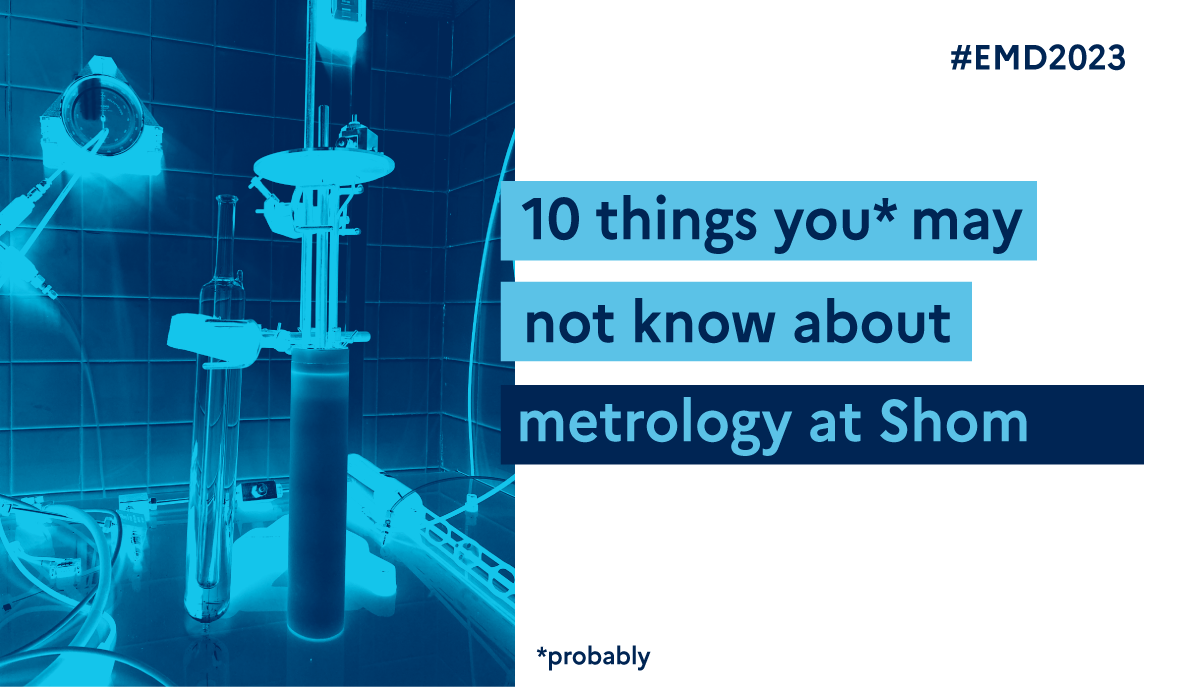
10 things you may not know about metrology at Shom
Mis à jour le 17/05/20231. Without metrology, no oceanography
Without sensors calibrated according to stable references, it is impossible for the scientific community to use their results. Metrology ensures comparison between measured data from one country to another and guarantees the traceability of measurements over time. Today, this is essential to study climate variations, for example.
2. We are able to calibrate temperature sensors with an accuracy of one thousandth of a degree
Thanks to an 800-litre calibration tank, unique in France. It can contain instruments of various sizes, including the buoys of the TRUSTED project, which are used to validate the measurements of the European satellites of the Sentinel network that observe the Earth.
This tank is regulated by an original buffer bath system allowing thermal stability of more than 0.001°C.
3. CTDs are our most accurate instruments
Indeed, these instruments can be lowered to a depth of more than 6000 m - where water masses are extremely stable. This requires very sensitive sensors to detect variations in the various measured parameters. This is essential because the CTD profiles (conductivity, temperature, depth) are used as a reference for other measurements in the database.
4. We are able to calibrate no less than 14 different physical quantities
These include
- temperature
- electrical conductivity
- pressure
- speed of sound in water
- magnetic direction
- tilt (roll - pitch)
- velocity for ocean currents
- length (for water level)
- turbidity
- chlorophyll a
- dissolved organic matter (DOM)
- nitrates
- dissolved oxygen
- depth (measured by multibeam echo sounders).
5. We calibrate all thermo-salinometers on French oceanographic vessels
As a member of the Coriolis network, we support our partners (CNES, CNRS, Ifremer, IPEV, IRD and Météo France) in the calibration of the temperature-salinity measuring devices that equip their vessels. Our laboratory is a reference in this field as well as for the analysis of the salinity of samples taken by these organisations.
6. Our metrology and oceanographic chemistry laboratory analyses between 2 and 3000 seawater samples per year
With only 4 people !
7. We are part of the MINKE European project which brings together metrology laboratories and oceanographic institutes
Within this project, we are responsible for two tasks concerning: salinity and marine currents. We are also involved in tasks concerning the traceability of fluorometric measurements, underwater acoustics, harmonisation of procedures, networking with all stakeholders or the trans-national opening of laboratories.
8. Each instrument is managed individually according to its drift
Depending on its drift history and the risk of generating out-of-tolerance values, the metrologist manages the return of each sensor to calibration.
9. We work for ourselves but not only !
As part of several European (MINKE, TRUSTED) and national (Argo) projects and scientific networks, we put our expertise at the service of the greatest number!
10. "Étalonnage" is the French word for calibration!
